
The Majestic Wilderness of Mount Rainier National Park
Explore the diverse landscapes and outdoor adventures of Mount Rainier National Park, where towering peaks, lush forests, and vibrant wildflower meadows await.
Mount Rainier National Park, located in Washington State, is a treasure trove of natural beauty and adventure. Dominated by the iconic Mount Rainier, an active stratovolcano standing at 14,411 feet, the park offers visitors a wide range of outdoor activities and breathtaking landscapes. From lush forests and wildflower meadows to glacial valleys and alpine lakes, the park's diverse ecosystems are a haven for nature lovers and outdoor enthusiasts alike. One of the park's most popular attractions is the Wonderland Trail, a 93-mile loop that encircles Mount Rainier. This challenging trail takes hikers through a variety of terrains and offers spectacular views of the mountain and surrounding landscapes. For those looking for a less strenuous experience, the park also boasts numerous shorter trails, such as the Skyline Trail, which provides stunning vistas and is accessible to hikers of all skill levels. In addition to hiking, Mount Rainier National Park is a prime destination for wildlife watching. The park is home to a variety of animals, including black bears, elk, mountain goats, and over 180 species of birds. During the summer months, visitors can witness the park's famous wildflower displays, with vibrant blooms carpeting the meadows in a riot of color. Winter brings its own charm, transforming the park into a snowy wonderland perfect for snowshoeing and cross-country skiing.
Local tips in Mount Rainier National Park
- Visit in July or August for the best wildflower displays.
- Check the weather forecast before your trip as conditions can change rapidly.
- Carry sufficient water and snacks, as facilities are limited in some areas.
- Arrive early in the day to avoid crowds, especially on weekends.
- Consider staying in nearby towns like Ashford or Packwood for easier access to the park.
The Majestic Wilderness of Mount Rainier National Park
Mount Rainier National Park, located in Washington State, is a treasure trove of natural beauty and adventure. Dominated by the iconic Mount Rainier, an active stratovolcano standing at 14,411 feet, the park offers visitors a wide range of outdoor activities and breathtaking landscapes. From lush forests and wildflower meadows to glacial valleys and alpine lakes, the park's diverse ecosystems are a haven for nature lovers and outdoor enthusiasts alike. One of the park's most popular attractions is the Wonderland Trail, a 93-mile loop that encircles Mount Rainier. This challenging trail takes hikers through a variety of terrains and offers spectacular views of the mountain and surrounding landscapes. For those looking for a less strenuous experience, the park also boasts numerous shorter trails, such as the Skyline Trail, which provides stunning vistas and is accessible to hikers of all skill levels. In addition to hiking, Mount Rainier National Park is a prime destination for wildlife watching. The park is home to a variety of animals, including black bears, elk, mountain goats, and over 180 species of birds. During the summer months, visitors can witness the park's famous wildflower displays, with vibrant blooms carpeting the meadows in a riot of color. Winter brings its own charm, transforming the park into a snowy wonderland perfect for snowshoeing and cross-country skiing.
When is the best time to go to Mount Rainier National Park?
Iconic landmarks you can’t miss
Henry M. Jackson Memorial Visitor Center
Discover the gateway to adventure at the Henry M. Jackson Memorial Visitor Center, your starting point for exploring Mount Rainier's breathtaking landscapes.

Sunrise Visitor Center
Discover the breathtaking beauty and adventure opportunities at Sunrise Visitor Center in Mount Rainier National Park.

Myrtle Falls
Discover the breathtaking beauty of Myrtle Falls within Mount Rainier National Park, where cascading waters meet stunning landscapes.

Mount Fremont Lookout Trail
Explore the stunning vistas of Mount Fremont Lookout Trail, a premier hiking destination in Washington offering unforgettable views and rich natural beauty.

Mt. Rainier Gondola
Experience the breathtaking views and adventure of Mt. Rainier Gondola, a premier scenic spot in Washington's stunning wilderness.

Tolmie Peak Fire Lookout
Explore the Tolmie Peak Fire Lookout, a historical landmark in Mt. Rainier National Park, offering stunning views and a glimpse into the past.

Mt. Fremont Fire Lookout
Discover the breathtaking vistas of Mt. Fremont Fire Lookout in Mount Rainier National Park, a historic landmark and hiker's paradise.

Christine Falls Bridge
Explore the stunning Christine Falls Bridge in Mount Rainier National Park, where natural beauty meets historical significance in a breathtaking setting.

High Rock Lookout
Discover stunning views of Mount Rainier and explore the natural beauty of High Rock Lookout—a premier hiking destination in Washington.
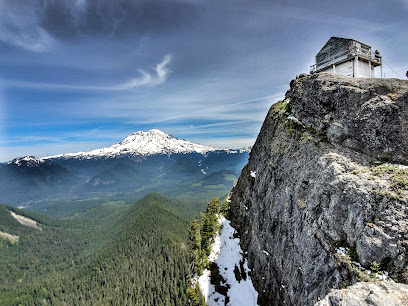
Panorama Point Overlook
Experience the stunning beauty of Mount Rainier at Panorama Point Overlook, a must-visit destination for breathtaking views and outdoor adventures.

Ricksecker Point
Experience breathtaking landscapes at Ricksecker Point, a premier vista point in Packwood, Washington, showcasing the beauty of the Pacific Northwest.
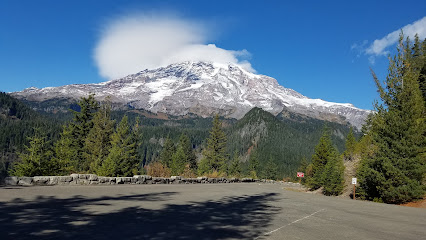
Mount Rainier National Park Lodging
Explore the breathtaking beauty of Mount Rainier National Park, where towering peaks and vibrant wildflowers create unforgettable adventures in nature.

Mount Rainier National Park Headquarters
Discover the wonders of Mount Rainier National Park at the Headquarters Visitor Center, your gateway to breathtaking landscapes and outdoor adventures.

Van Trump Trail, Mount Rainier National Park
Discover the stunning beauty of Van Trump Trail at Mount Rainier National Park, where nature's wonders await every adventurous traveler.

Stevens-Van Trump Historical Monument
Explore the Stevens-Van Trump Historical Monument, where history meets stunning natural beauty at Mount Rainier National Park.

Unmissable attractions to see
Northwest Trek Wildlife Park
Explore Northwest Trek Wildlife Park, a captivating wildlife sanctuary featuring native species and stunning landscapes in Washington's Pacific Northwest.

Mount St. Helens National Volcanic Monument
Explore the stunning landscapes and rich geological history at Mount St. Helens National Volcanic Monument, a remarkable national reserve in Washington.

Henry M. Jackson Memorial Visitor Center
Explore the beauty of Mount Rainier National Park from the Henry M. Jackson Memorial Visitor Center, your gateway to adventure and nature's wonders.

Mount Rainier
Discover the breathtaking landscapes and rich biodiversity of Mount Rainier, a stunning volcano in Washington State, perfect for outdoor adventures year-round.

Myrtle Falls
Explore the breathtaking beauty of Myrtle Falls in Mount Rainier National Park, a stunning oasis for nature lovers and adventure seekers alike.

Sunrise Visitor Center
Discover the breathtaking beauty of Mount Rainier at the Sunrise Visitor Center, your gateway to adventure and exploration in Washington's premier national park.

Myrtle Falls
Discover the breathtaking beauty of Myrtle Falls, a stunning waterfall in Mount Rainier National Park, perfect for hiking and nature photography.

Reflection Lake
Experience the captivating beauty of Reflection Lake, where serene waters meet the majestic backdrop of Mount Rainier in Washington State.

Longmire Museum
Explore the history and culture of Mount Rainier at the Longmire Museum, a captivating stop for every visitor to Washington's stunning national park.

Mount Fremont Lookout Trail
Discover the breathtaking views and natural beauty of Mount Fremont Lookout Trail, a must-visit hiking destination in Washington's stunning landscapes.

Mt. Rainier Gondola
Discover the stunning views of Mt. Rainier from the gondola and explore the majestic beauty of Washington's landscape.

Naches Peak Loop Trailhead
Explore the enchanting Naches Peak Loop Trailhead, a scenic hiking gem in Washington, offering stunning views, vibrant wildflowers, and unforgettable outdoor adventures.

Tolmie Peak Fire Lookout
Experience the breathtaking views and historical significance of Tolmie Peak Fire Lookout in Mount Rainier National Park, a must-visit for outdoor enthusiasts.

Mt. Fremont Fire Lookout
Discover the breathtaking views and historical significance of Mt. Fremont Fire Lookout in Mount Rainier National Park, a must-visit for nature lovers.

Christine Falls Bridge
Explore the enchanting Christine Falls Bridge in Mount Rainier National Park, a historical landmark offering stunning views and rich natural beauty.

Essential places to dine
Copper Creek Inn Restaurant & Lodging
Discover Copper Creek Inn: A cozy retreat offering delicious dining and log cabin lodging near stunning Mount Rainier National Park.
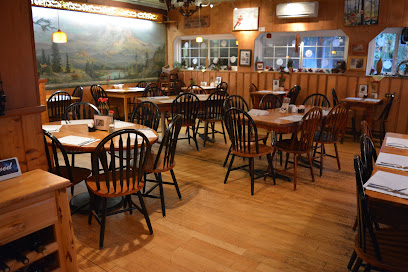
Wildberry Restaurant
Experience the fusion of Nepalese and American cuisine at Wildberry Restaurant near Mount Rainier National Park.

Mt. Rainier Railroad Dining Co.
Discover the perfect blend of scenic beauty and hearty dining at Mt. Rainier Railroad Dining Co., your ideal stop near Mount Rainier.

Summit House Restaurant
Experience exquisite dining at Summit House Restaurant with breathtaking views of Mount Rainier amidst Washington's stunning landscape.

Rainier BaseCamp Bar & Grill
Discover delightful flavors at Rainier BaseCamp Bar & Grill - your perfect dining stop near Mount Rainier National Park.

Paradise Inn Dining Room
Experience rustic charm and delicious American cuisine amidst breathtaking scenery at Paradise Inn Dining Room in Mount Rainier National Park.

National Park Inn Dining Room
Experience delightful American cuisine surrounded by breathtaking landscapes at Mount Rainier's National Park Inn Dining Room.

Markets, malls and hidden boutiques
Mount Rainier National Park
Explore the breathtaking landscapes of Mount Rainier National Park, a gem in Washington known for its stunning views, diverse wildlife, and endless outdoor adventures.

IKEA
Discover stylish furniture and home decor at IKEA Renton, a shopper's paradise for all your home furnishing needs.

Walmart Supercenter
Discover the convenience of Walmart Supercenter in Puyallup, WA, where diverse products meet affordability, making shopping a breeze for every traveler.

Henry M. Jackson Memorial Visitor Center
Discover the gateway to Mount Rainier's natural beauty and rich history at the Henry M. Jackson Memorial Visitor Center.

Mount Rainier
Discover the awe-inspiring beauty of Mount Rainier, an active volcano and national park offering stunning landscapes and outdoor adventures in Washington.

Safeway
Discover Enumclaw's Safeway: a grocery store packed with fresh produce, baked goods, and local flavors for every traveler!

Sunrise Visitor Center
Explore the majestic beauty of Mount Rainier National Park at the Sunrise Visitor Center, your gateway to adventure and nature's wonders.

Fred Meyer
Explore Fred Meyer, Renton's vibrant grocery store, featuring fresh produce, local delicacies, and a delightful shopping experience.

Wapiti Outdoors
Discover Wapiti Outdoors in Enumclaw, WA - your go-to destination for unique gifts, delicious espresso, and delightful ice cream on the way to Mt. Rainier.

Target
Explore Target in Renton for a diverse shopping experience, featuring clothing, electronics, home goods, and more—all at moderate prices.

Fischer's Market
Experience local flavors and convenience at Fischer's Market in Randle, WA - a must-visit grocery store for every traveler.

Paradise
Explore the breathtaking beauty of Paradise in Mount Rainier National Park, a must-visit scenic spot for nature lovers and adventurers.
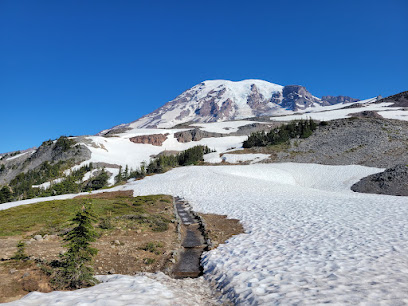
Whittaker Mountaineering
Explore the great outdoors with top-notch equipment and expert advice at Whittaker Mountaineering in Ashford, WA.

West Coast Self-Storage Columbia City
Your trusted partner for hassle-free storage solutions in the heart of Columbia City, Seattle.

Ashford Creek Pottery
Explore the enchanting Ashford Creek Pottery, a unique art gallery and pottery store in Ashford, WA, showcasing local craftsmanship and creativity.

Essential bars & hidden hideouts
Island Soul Rum Bar & Soul Shack
Discover the vibrant fusion of Caribbean flavors and soul food at Island Soul Rum Bar & Soul Shack in Seattle, a must-visit for food enthusiasts.

Copper Creek Inn Restaurant & Lodging
Discover rustic charm and delightful dining at Copper Creek Inn, your gateway to Mount Rainier's breathtaking beauty.

The Historic Mint Restaurant & Alehouse
Experience the best of American cuisine and local brews at The Historic Mint Restaurant & Alehouse in Enumclaw, Washington.

The Rainier Bar & Grill
Discover the unique flavors of American cuisine at the Rainier Bar & Grill, a must-visit dining destination in Enumclaw, Washington.
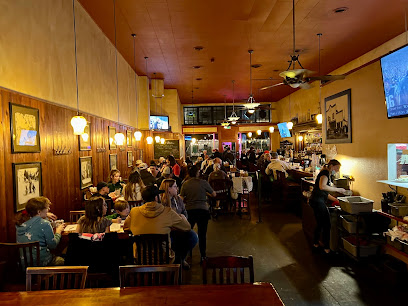
Wildberry Restaurant
Discover the perfect blend of Nepalese flavors and American classics at Wildberry Restaurant, just moments from Mount Rainier.

Mt. Rainier Railroad Dining Co.
Discover the unique dining experience at Mt. Rainier Railroad Dining Co., where delicious meals and scenic train rides converge in a beautiful setting.

Star Brass Works Lounge
Experience the vibrant atmosphere and delicious offerings at Star Brass Works Lounge, a hidden gem in Seattle's Georgetown neighborhood.

Summit House Restaurant
Discover breathtaking views and delightful Pacific Northwest cuisine at the Summit House Restaurant in Crystal Mountain, Washington.

Naches Tavern
Discover the delightful flavors and warm ambiance of Naches Tavern, the perfect spot for a satisfying meal in Enumclaw, Washington.

Rainier BaseCamp Bar & Grill
Experience the flavors of the Pacific Northwest at Rainier BaseCamp Bar & Grill, your go-to spot for delicious meals near Mount Rainier.

Paradise Village Hotel & Restaurant
Experience the perfect blend of comfort and culinary delight at Paradise Village Hotel & Restaurant, your gateway to Mount Rainier National Park.
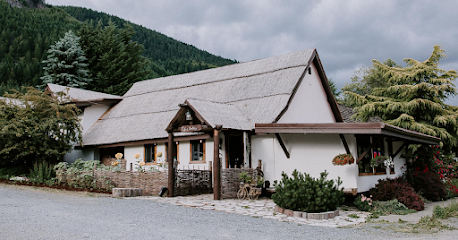
Elbe Bar & Grill
Experience the best of local flavors at Elbe Bar & Grill, a cozy spot perfect for unwinding after exploring Washington's stunning landscapes.

Heyday Bar & Restaurant
Discover the vibrant flavors of Seattle at Heyday Bar & Restaurant, where American cuisine meets a lively atmosphere in the heart of Rainier Valley.

9lb Hammer
Unwind at 9lb Hammer, a vibrant bar in Georgetown, Seattle, offering delicious food, craft beers, and a lively atmosphere.

The Mountaineering Club
Experience the adventurous spirit of Seattle at The Mountaineering Club, a vibrant bar featuring crafted cocktails and local brews in the University District.

Local Phrases about Mount Rainier National Park
-
- HelloYakama
[yah-KAH-mah] - GoodbyeHózhǫ́
[HOE-zhuhn] - YesAhe
[ah-HAY] - NoHą́
[HAHN] - Please/You're welcomeYá'át'ééh
[yah-AHT-ay] - Thank youYá'át'ééh
[yah-AHT-ay] - Excuse me/SorryT'áá hwó'ají
[TAH-hah WHO-ah-zhee] - How are you?Nizhónígo
[nee-ZHOE-nee-goh] - Fine. And you?Nizhónígo. Áya
[nee-ZHOE-nee-goh. AH-yah] - Do you speak English?Ayóó'anííníshní
[AH-yoh-ah-NEE-neesh-nee] - I don't understandDíí bááh nishłį́
[dee bahh neesh-LIH]
- HelloYakama
-
- I'd like to see the menu, pleaseNááhó, menu naakai, nihikaa
[NAH-hoh, MEH-noo nah-KAH-ee, nee-hee-KAH] - I don't eat meatT'áá shí bí yinaagóó níłch'i
[TAH-hah shee bee yee-NAH-goh neel-CHEE] - Cheers!Shikéédéé
[shee-KAY-day] - I would like to pay, pleaseNihikaa, díí baa shí
[nee-hee-KAA, dee bah shee]
- I'd like to see the menu, pleaseNááhó, menu naakai, nihikaa
-
- Help!T'áá hwó'ají
[TAH-hah WHO-ah-zhee] - Go away!Nihí
[NEE-hee] - Call the Police!Nihikaa, t'áá hwó'ají
[nee-hee-KAA, TAH-hah WHO-ah-zhee] - Call a doctor!Nihikaa, ch'ízho
[nee-hee-KAA, CHEEZ-hoh] - I'm lostNihidleeł
[nee-hee-DLAY] - I'm illNihidleeł
[nee-hee-DLAY]
- Help!T'áá hwó'ají
-
- I'd like to buy...Nihikaa, háálá
[nee-hee-KAA, HAH-lah] - I'm just lookingT'áá hóló
[TAH-hah hoh-LOH] - How much is it?Hádééł'á?
[HAH-day-LAH] - That's too expensiveAahóó
[ah-HOH] - Can you lower the price?Béésh bee náshdla'
[BAYSH bee NAHSH-dlah]
- I'd like to buy...Nihikaa, háálá
-
- What time is it?Háídéésh?
[HAH-ee-DAYSH] - It's one o'clockBíhígíí
[BEE-hee-GHEE] - Half past (10)Níłch'í bikáá' dah
[neel-CHEE bee-KAH dah] - MorningAhíni
[ah-HEE-nee] - AfternoonHózhóogo
[HOE-zhoe-GOE] - EveningYiłtsoh
[yil-TSOH] - YesterdayAchééh
[ah-CHEH] - TodayBiil
[beel] - TomorrowBikéyah
[bee-KAY-yah] - 1Tʼááłáʼí
[TAH-lah-ee] - 2Naaki
[NAH-kee] - 3Tááʼ
[TAH-ah] - 4Dį́į́ʼ
[dee-ee] - 5Ashdlaʼ
[ahsh-LAH] - 6Hashchʼéé
[hahsh-chay] - 7Tsostsʼid
[tsoh-tseet] - 8Tseebíí
[tseh-bee] - 9Tááʼtsʼósí
[TAH-ah-tsoh-see] - 10Náhást'éí
[NAH-hahst-ay]
- What time is it?Háídéésh?
-
- Where's a/the...?Háadii...
[HAH-dee] - What's the address?Béésh aanííníshní?
[BAYSH ah-NEE-neesh-nee] - Can you show me (on the map)?Béésh bee naaznilóó?
[BAYSH bee nahz-nee-LOH] - When's the next (bus)?Háádéésh chʼíłkáád?
[HAH-day-sh chil-KAH-d] - A ticket (to ....)Béésh bee naaznilóó?
[BAYSH bee nahz-nee-LOH]
- Where's a/the...?Háadii...
History of Mount Rainier National Park
-
Long before European explorers arrived, the area now known as Mount Rainier National Park was home to several Native American tribes, including the Puyallup, Nisqually, and Muckleshoot. These tribes referred to the mountain by various names, such as Tahoma or Tacobet, which means 'the source of nourishment from the many streams coming from the slopes.' The mountain was a sacred place for these tribes, serving both as a site for spiritual activities and as a critical resource for hunting and gathering.
-
The first European to document Mount Rainier was British naval officer George Vancouver during his 1792 expedition. Vancouver named the mountain in honor of his friend, Rear Admiral Peter Rainier. This marked the beginning of European exploration and mapping of the region, although it would be many years before the area was thoroughly explored by non-Native settlers.
-
Mount Rainier National Park was established on March 2, 1899, becoming the fifth national park in the United States. This designation was largely due to the efforts of naturalist John Muir and other conservationists who recognized the area's unique natural beauty and ecological significance. The park was created to preserve the mountain’s glaciers, forests, and diverse ecosystems for future generations.
-
The Wonderland Trail, a 93-mile loop around Mount Rainier, was completed in 1915. The trail offers hikers a challenging yet rewarding way to experience the park's varied terrain, from dense forests to alpine meadows. The construction of the trail was a significant milestone in the park's history, enhancing its accessibility and popularity among outdoor enthusiasts.
-
During the Great Depression, the Civilian Conservation Corps (CCC) played a critical role in developing Mount Rainier National Park's infrastructure. From 1933 to 1942, the CCC built trails, roads, and buildings, many of which are still in use today. Their work not only improved access to the park but also helped preserve its natural beauty.
-
Mount Rainier is an active stratovolcano, and its history includes numerous natural events such as eruptions, lahars, and floods. One of the most notable events was the Osceola Mudflow approximately 5,600 years ago, which dramatically altered the surrounding landscape. More recent events, like the floods of 2006, have prompted ongoing efforts to balance visitor access with the protection of natural resources.
-
Mount Rainier has long captured the imagination of artists, writers, and adventurers. Its imposing presence and natural beauty have been featured in countless works of art, literature, and photography. The mountain has also inspired various cultural and scientific studies, contributing to our understanding of geology, ecology, and conservation.
Mount Rainier National Park Essentials
-
Mount Rainier National Park is located in Washington state, approximately 54 miles southeast of Seattle. The nearest major airports are Seattle-Tacoma International Airport (SEA) and Portland International Airport (PDX). From Seattle, you can reach the park by car via State Route 7 and State Route 706. There is no direct public transportation to the park, so renting a car is the most convenient option. Shuttle services are available from nearby cities during peak seasons.
-
Within the park, private vehicles are the most common mode of transportation. The park's road system provides access to various visitor centers, campgrounds, and trailheads. During the summer months, a free shuttle service operates in the Paradise area, reducing traffic congestion. Bicycles are allowed on park roads but not on trails. For a more eco-friendly option, consider carpooling or using the shuttle services provided by local tour operators.
-
The official currency is the United States Dollar (USD). Major credit cards are widely accepted in the park's visitor centers, gift shops, and lodges. However, it is advisable to carry some cash, especially for smaller purchases and in more remote areas where card payment options might be limited. ATMs are available at some visitor centers but may not be reliable, so plan accordingly.
-
Mount Rainier National Park is generally a safe destination for tourists. However, natural hazards such as steep terrain, rapidly changing weather conditions, and wildlife encounters should be taken seriously. Always check weather forecasts, carry appropriate gear, and stay on marked trails. Crime rates targeting tourists are low, but standard precautions like securing valuables and being aware of your surroundings are recommended.
-
In case of emergency, dial 911 for immediate assistance. Park rangers are trained to handle emergencies and can be found at visitor centers and ranger stations. It is essential to carry a first aid kit and know basic first aid procedures. For minor health issues, there are first aid stations in the park. Always inform someone of your hiking plans and expected return time.
-
Fashion: Do dress in layers and be prepared for sudden weather changes. Don't wear cotton clothing; opt for moisture-wicking materials. Religion: Do be respectful of any indigenous sacred sites within the park. Public Transport: Do use the park's shuttle services where available to reduce traffic and pollution. Don't expect extensive public transport options within the park. Greetings: Do greet fellow hikers and park staff with a friendly hello. Eating & Drinking: Do pack out all trash and food waste. Don't feed the wildlife, as it disrupts their natural behavior and can be dangerous.
-
To experience Mount Rainier like a local, visit during the shoulder seasons of late spring or early fall to avoid the summer crowds. Take the time to explore lesser-known trails such as the Northern Loop or the Wonderland Trail for a more secluded experience. Engage with park rangers and attend interpretive programs to learn about the park's geology, flora, and fauna. Don't miss the stunning wildflower meadows in the Paradise and Sunrise areas during the summer months.
Trending Landmarks in Mount Rainier National Park
-
Henry M. Jackson Memorial Visitor Center
-
Sunrise Visitor Center
-
Myrtle Falls
-
Mount Fremont Lookout Trail
-
Mt. Rainier Gondola
-
Tolmie Peak Fire Lookout
-
Mt. Fremont Fire Lookout
-
Christine Falls Bridge
-
High Rock Lookout
-
Panorama Point Overlook
-
Ricksecker Point
-
Mount Rainier National Park Lodging
-
Mount Rainier National Park Headquarters
-
Van Trump Trail, Mount Rainier National Park
-
Stevens-Van Trump Historical Monument
Nearby Cities to Mount Rainier National Park
-
Things To Do in Federal Way
-
Things To Do in Kent
-
Things To Do in Tacoma
-
Things To Do in Renton
-
Things To Do in Bellevue
-
Things To Do in Bremerton
-
Things To Do in Seattle
-
Things To Do in Redmond
-
Things To Do in Kirkland
-
Things To Do in Yakima
-
Things To Do in Lynnwood
-
Things To Do in Everett
-
Things To Do in Hood River
-
Things To Do in Marysville
-
Things To Do in The Dalles












